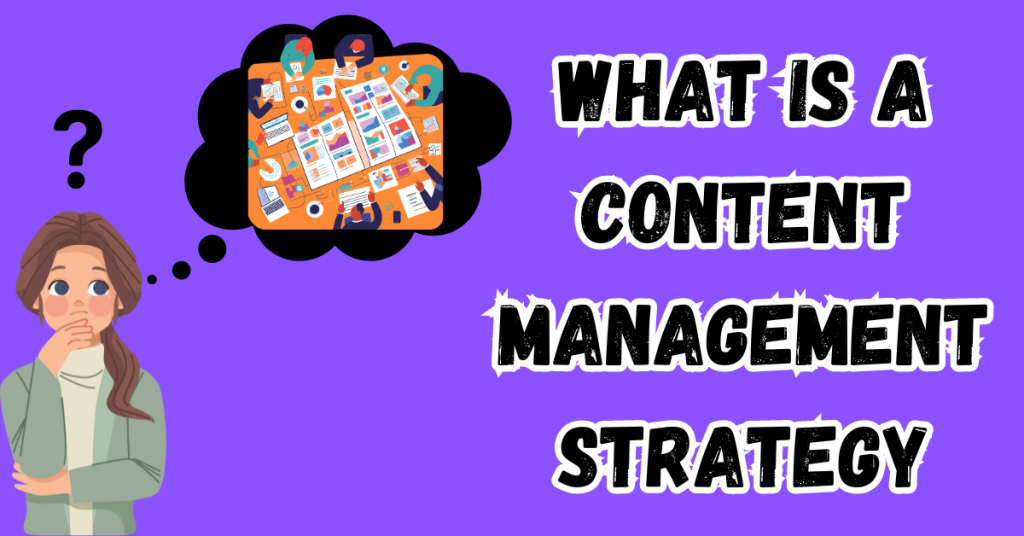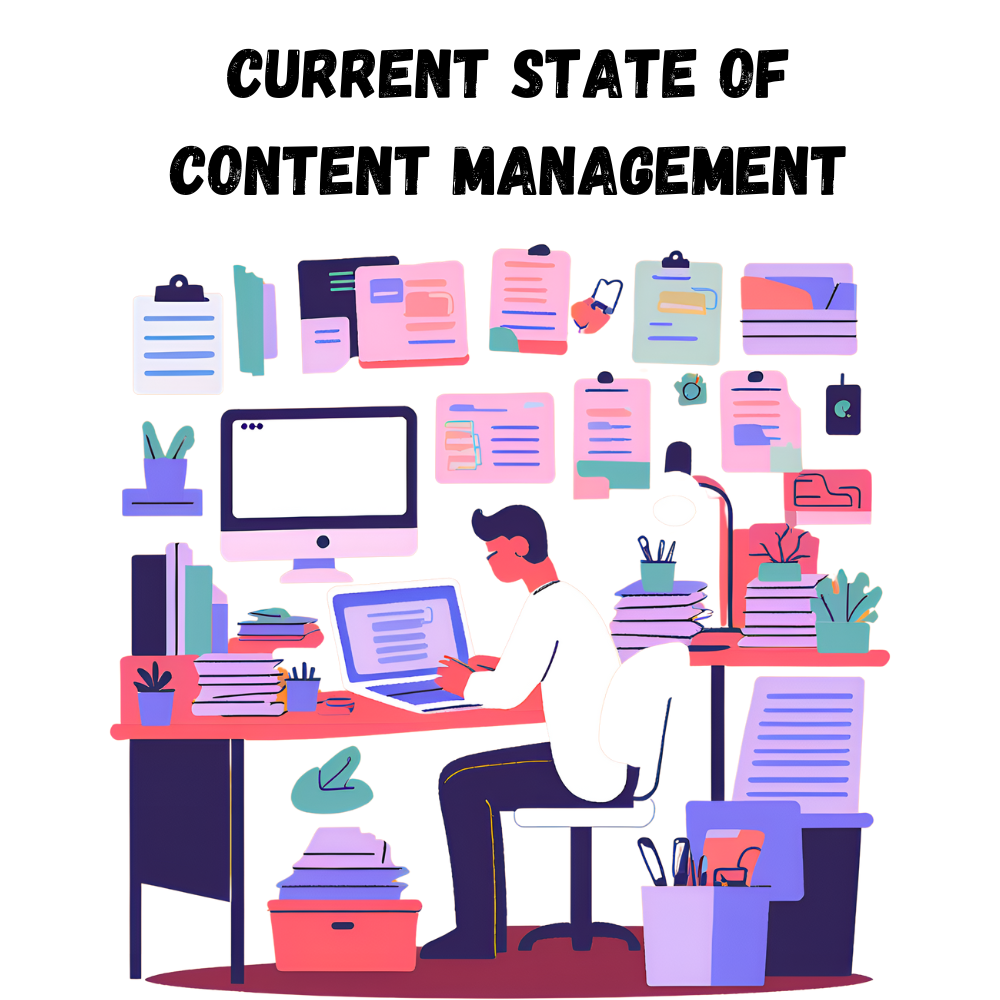Content creation and distribution are fundamental to any business strategy today. Wondering what to post to attract new and engage current customers, drive more leads, or enhance brand visibility? But amazingly content is not enough. You also need a way to handle that stress efficiently.
This is where a content management strategy comes in. In this blog post, we will elaborate on what a content management strategy is and why it is necessary for your business along with providing 15 perfect types to help you rise above the rest using any one of these strategies.

What is a Content Management Strategy?
What is a Content Management Strategy? This is an explanation of how your business will handle content from its inception, from publishing it to ultimately archiving.
A content management strategy has three basic parts
Content Creation– This is the act of articulating, organizing, and producing information. It contains determining who will generate content, which subjects will be flagged off, and as well what type of structures (like text, video, or audio)
Content Delivery – Content published and available for users to consume. Determining the outlets on which content will be distributed (e.g. website, social media, email)
Content Governance– This covers the creation of rules and regulations used to manage content. It documents the roles and responsibilities for content management, as well as guidelines for what constitutes quality content and how to meet compliance.
Why is content management strategy so important?
- Some reasons for having a content management strategy :
- It makes all content strategically relevant to business goals and objectives
- Easy management of content with better results
- Enhances content quality
- It enhances user experience
Content is Aligned with Contingent Business Objectives
A content management strategy is a way that may help you to get your business’s content in sync with its goals and objectives. For instance, if your goal is to drive sales as a company, you could focus on developing case studies that demonstrate the results customers have achieved using these products or services.

Increases Efficiency
Managing content with no definite plan or purpose can be quite time-consuming and just not effective. A content management strategy serves as a guiding policy for developing, running, and enforcing content. This ultimately helps in streamlining processes, reduces duplication, and ensures that all parties involved with content management are aligned.
Improves Content Quality
Include a definitive content management strategy that details requirements for creating, reviewing, and endorsing content. All this is done to ensure the quality of the content being produced and that it resonates with its intended audience.

Enhances User Experience
Users have their agenda for using content and a good CMS has factored in these needs when providing an ideal retrieval of information across multiple devices. Improving User Experience A content management strategy may be able to achieve the objective of providing users with timely – and contextually relevant information by making it easy for users to get hold of what they want.
Advantages of Content Management Plan
It only makes sense to invest in a content management strategy, as it comes with a host of benefits for your business such as;

Increases Engagement
A content library that is well maintained can guarantee updated and relevant content, leading to enhanced user engagement. For instance, a business with regular updates on its blog or that ensures they are dealing adequately (and quickly) with customer concerns is pretty likely to have another website visit from an identical visitor which IS going to turn into higher page view averages.
Improves Collaboration
This will facilitate intra-departmental collaboration among varying teams that partake in the content creation process like marketing, sales, and customer service. This would mean for businesses the better you can define roles and responsibilities, in line with establishing communication channels more likely they can help each other work as a team to create even higher quality original content material.

Better SEO
Search engines like sites that are frequently updated, and therefore writing in this space will be good for recognition by search engines. A content management strategy is also useful to keep the website up-to-date and Google will reward a well-kept site accordingly.
Greater ROI
All this increases user engagement, helps facilitate collaboration, and improves SEO performance which creates more bang for your buck when we talk about return on investment (ROI) for businesses. One reason is that research from the Content Marketing Institute showed simply having a documented content strategy makes you more effective at content marketing.
15 Best Ways To Develop A Content Management Strategy
But now, after having an understanding of why and how can a content management strategy help you in your business growth, let us move ahead to understand some practices for developing it.

Current State of Content Management
How to manage the content you have: Assessing your current process before building a better one With the following components as part of an assessment:
The Content Strategy Assessment is designed to Determine the challenges and gaps in current content creation methods of delivery, and roles where it falls apart Collect feedback from staff that touch on elements contained within this project.
Take a goal-oriented approach to content.
Having analyzed your current methods, the next stage is to set specifics for what you want content marketing to achieve. These should be in tune with your business objectives and certainly include It can used to also you will increase brand awareness, and leads, improve customer engagement, and more.
Identify your target audience.
A well-known part aside, let us consider analyzing the audience correctly and implementing a successful content management strategy. Start with research so you can determine who they are their demographics, preferences, and pain points. Armed with this information, you can start optimizing your content ideation and delivery processes

Create a content calendar
Content Calendars are a scheduling tool that sets out exactly when and where specific pieces of content will go live It is a critical part of content management strategy, for the following reasons: Create consistent content Publish by main business initiatives Coordinate between teams and platforms.
Implement content governance practices
Creating content governance policies: An important part of a content management strategy. These policies are to include Roles and content creation, review and approval processes Criteria for maintaining the quality of content Guidelines regarding compliance & regulations Procedures to archive and update redundant content
Select the Perfect Content Management System (CMS)
CMS (Content management system) A content management system manages the creation and modification of digital content. In content marketing, choosing the right CMS is crucial for a good Content Management strategy as it
The ease with which content is made and posted How team members can collaborate to fine-tune content for SEO Choose a CMS based on factors like; ease of use, whether it scales, and how well it integrates with other tools/platforms.
Implement SEO best practices

Keyword researchEvery CMS strategy should be augmented with search engine optimization (SEO) techniques to get more visibility for your content and ultimately drive it up the organic traffic charts. Some key SEO practices that you should also follow are –
Keyword research to determine liver & onion SEO for readability, headers, and subheaders inside the content Search engines will block internal and external connections to increase the importance of its contents.
Educate Your Team On The Best Practices Of Content Management
Educating team members on content management best practices is an essential element of your implementation plan. Training should cover:
The way your chosen CMS works Rules for creating and editing content SEO best practices Providing ongoing training will keep your team informed of the latest in content management practices and trends.

Consistently share your content
While the above helps you to create great content, promoting that will be half of your battle. Create a Content Promotion Plan with
Sending the latest content through email newsletters Promoting on social media Collaborating with industry influencers for guest posts and backlinks
Monitor and Measure Content Performance
Your content management system will be in place to support the factors outlined above, Content performance reporting and monitoring must become an integral part of your approach as a business that handles information regularly.
Conversion Rates For Website Traffic Conversion Rates for Engagement Metrics Search Engine Rankings on Keywords that Convert to Leads Segmentation
Be Ready To Pivot And Tweak Your Approach
The landscape is ever-changing, and your management tactics need to be also. As such, be ready to tweak and iterate your strategy based on:
Changes in the needs and preferences of your target audience tools and technologies for content management?Shifting industry trends/ best practices
Conclusion
Today, in the digital era, a well-organized content management strategy is necessary for businesses that are striving to deliver and organize a high caliber of content efficiently. This can help you to come up with a successful content marketing strategy and make sure that your business gets an optimal position where it belongs.
Your overall content quality, user experience, and growth can take a huge leap forward by implementing a good content management strategy. Assess your current practices and goals so that you know exactly how to solve the problem your future self and customers will thank you.

Is an Entrepreneur, Business Adviser. He loves to do research on the business and acquire knowledge on the business topic and this knowledge he used in his business. He also believes that sharing is caring that’s why he starts to write for those people who actually need help with the business, marketing, business strategy, skills, and creativity in business topic which is very important for them.


